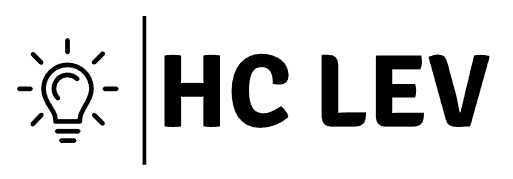As we embark on this exploration of how bonus caps affect real value, we find ourselves at the intersection where financial regulations meet corporate culture.
Collectively, we have observed how companies across various industries grapple with the implications of imposing limits on bonuses. This isn’t just about numbers on a spreadsheet; it’s about understanding the ripple effects these caps have on:
- Employee motivation
- Company loyalty
- Overall organizational health
We recognize that while the intention behind bonus caps often aims to:
- Curb excessive risk-taking
- Promote fairness
the reality can be far more complex.
Together, we delve into the nuances of this policy, examining how it shapes not just the financial landscape but also the intrinsic value within a company. By dissecting the multifaceted impacts, we aim to shed light on whether these caps truly align with their intended goals or if they inadvertently shift the dynamics of value creation.
The Balancing Act of Regulations
Regulations on bonus caps require us to carefully balance incentivizing talent with maintaining financial stability. As we navigate this complex terrain, we recognize that our shared goal is to create an environment where everyone feels valued and motivated.
Challenges and Opportunities with Bonus Caps:
Bonus caps, though necessary for financial prudence, challenge us to rethink how we offer incentives. It’s not just about limiting financial rewards; it’s about reshaping our organizational dynamics to ensure everyone feels they’re part of something bigger.
Alternative Ways to Motivate and Engage Teams:
- Explore alternative motivational strategies.
- Foster a culture prioritizing personal growth and development.
- Align individual aspirations with our organizational goals.
This approach not only complies with regulatory standards but also strengthens our collective identity.
Building a Workplace Beyond Monetary Incentives:
Together, we strive to build a workplace where incentives go beyond monetary gain and create a sense of belonging.
Commitment to Balance and Talent Nurturing:
Our commitment is to strike a harmonious balance that respects regulations while nurturing the talent that drives us forward.
Impact on Employee Morale
Employee Morale and Financial Incentive Caps
Employee morale can significantly shift when financial incentives are capped, necessitating new strategies to maintain motivation and engagement. Feeling valued and appreciated is integral to our sense of belonging within an organization. Bonus caps can create a sense of limitation, potentially leading to decreased enthusiasm. It’s essential to explore other avenues to uplift spirits and reinforce commitment to shared goals.
Fostering a Supportive Environment
We can foster a supportive environment by emphasizing non-monetary incentives. Effective strategies include:
- Recognition programs
- Opportunities for professional growth
- A culture of open communication
When employees feel heard and acknowledged, it strengthens their ties to the organization, making them more resilient to changes in financial incentives.
Cultivating Purpose and Community
In our organizational dynamics, it’s crucial to cultivate a sense of purpose and community. By focusing on:
- Team achievements
- Personal development
we can counterbalance the effects of bonus caps. Together, we can navigate these challenges and maintain a thriving workplace atmosphere.
Aligning Incentives with Goals
To effectively align our financial incentives with organizational goals, we must ensure they directly support and drive the desired outcomes. By doing so, we create a cohesive environment where everyone feels connected to the mission.
Bonus caps play a critical role in this process. They’re not just limitations; they’re strategic tools that help us focus on aligning incentives with what truly matters. When we cap bonuses, we encourage a shift from individual gain to collective achievement, fostering a sense of unity.
Incentives should be tailored to reflect the values and objectives of our organization. By understanding our unique organizational dynamics, we can design incentive structures that motivate us to work toward shared goals.
It’s essential that these incentives are:
- Transparent
- Fair
This ensures everyone feels valued and motivated.
Together, we can create a work culture where our efforts align seamlessly with organizational aspirations, ensuring we all move forward as a united and purpose-driven team.
Unintended Consequences Unveiled
Bonus Caps and Their Impacts
While bonus caps aim to align individual efforts with organizational goals, they can sometimes lead to unexpected challenges that need addressing.
Motivation and Performance:
- Bonus caps, while intended to create fairness, might inadvertently dampen motivation.
- High achievers may feel their extra efforts go unrecognized when incentives are capped, potentially impacting their drive and performance.
- This can create a ripple effect on organizational dynamics, where the spirit of pushing boundaries is subtly discouraged.
Collaboration and Team Dynamics:
- Bonus caps can sometimes foster an environment where collaboration takes a backseat.
- Colleagues might start seeing each other more as competitors than teammates.
- This shift can erode the unity and trust that are deeply valued within the organization.
Addressing the Challenges:
By understanding these unintended consequences, we can work together to craft incentive structures that:
- Align with organizational goals.
- Nurture a supportive and motivating environment for everyone.
Conclusion:
It’s crucial to remain mindful of how these dynamics can undermine our collective spirit and shared objectives, ensuring that our incentive structures promote both individual and collective success.
Navigating Fairness and Perception
Evaluating Fairness and Perception in Bonus Caps
We must carefully evaluate how fairness and perception shape employees’ acceptance of bonus caps. Our shared sense of belonging within an organization hinges on how equitable we perceive our incentives to be.
Importance of Fairness
When we implement bonus caps, it’s crucial that everyone sees them as fair. Otherwise, they risk undermining morale and trust. If employees feel that bonus caps are applied unevenly, it can lead to:
- Dissatisfaction
- Disengagement
These issues can significantly affect the overall organizational dynamics.
Strategies for Implementation
To navigate these waters, we should:
- Communicate transparently about the reasons behind bonus caps.
- Explain how they align with our collective goals.
- Involve employees in discussions about bonus caps.
By involving employees in these discussions, we foster an environment where everyone feels valued and heard. This approach not only enhances acceptance but also strengthens our internal bonds.
Commitment to a Cohesive Workplace
As we strive for a cohesive workplace, understanding and addressing perceptions around bonus caps becomes vital. Ultimately, our commitment to fairness ensures that incentives contribute positively to our organizational culture.
Redefining Organizational Dynamics
We’re reshaping how our teams interact and collaborate to adapt to the evolving landscape of organizational dynamics.
By embracing bonus caps, we’re fostering an environment where every team member feels valued and motivated. It’s not just about limiting financial incentives but about encouraging a culture of shared success and mutual support.
As we redefine our organizational dynamics, we’re shifting focus from individual accomplishments to collective achievements. Bonus caps help us balance incentives, ensuring that everyone contributes meaningfully without overshadowing others.
This approach strengthens our team spirit, making everyone feel like they belong to something greater than themselves.
Our new model emphasizes:
- Open communication
- Cooperative problem-solving
This aligns with our values and creates a supportive community where creativity and innovation thrive.
By prioritizing equitable rewards and nurturing inclusivity, we’re building a thriving workplace where every voice matters.
Together, we’re transforming challenges into opportunities, ensuring our organization remains resilient and forward-thinking.
Bonus Caps: Valuable Insights
We’ve gathered compelling insights on how implementing bonus caps can drive a more equitable and cohesive work environment. By leveling the playing field, bonus caps ensure that incentives are distributed more fairly across all levels of the organization. This fosters a sense of belonging among team members, as everyone feels they’re contributing to a collective success rather than competing for disproportionate rewards.
In the realm of organizational dynamics, bonus caps encourage collaboration over competition. When employees know their efforts contribute to shared goals, they’re more likely to:
- Support one another
- Share knowledge
- Innovate together
This can lead to a more harmonious workplace where trust and teamwork thrive.
Moreover, bonus caps can align personal incentives with long-term organizational objectives. By preventing excessive rewards for a select few, they ensure that everyone remains focused on:
- Sustainable growth
- Shared achievements
Together, we can build an environment where every team member feels valued and motivated, driving us towards collective success.
The Road to Value Optimization
To optimize value, we must focus on strategies that maximize both individual potential and collective organizational benefits.
By aligning our goals with well-structured bonus caps, we create a balanced system where incentives drive performance without overshadowing team cohesion. A flexible approach to bonus caps allows us to reward achievements fairly while maintaining a sense of unity.
In exploring the road to value optimization, we recognize the importance of understanding organizational dynamics.
We can’t overlook how individual motivations tie into the broader organizational culture. It’s crucial to foster an environment where everyone feels valued and part of a shared mission. Incentives should motivate us, not divide us.
Our journey involves constantly evaluating and adjusting our reward systems. We strive for a model that encourages personal growth and aligns with our organizational values.
By doing so, we ensure that our incentives:
- Boost short-term results
- Contribute to sustained, long-term success for all members of our organization.
How do bonus caps influence the long-term financial stability of a company?
Bonus caps play a crucial role in shaping a company’s financial outlook. They help maintain stability by:
- Controlling excessive payouts
- Aligning incentives with long-term goals
Our team recognizes the importance of these limits in safeguarding the organization’s financial health.
When appropriately implemented, bonus caps can:
- Promote responsible financial practices
- Ensure sustainable growth for the company in the long run
What historical examples demonstrate the effect of bonus caps on organizational success?
Historical Examples and the Impact of Bonus Caps
Historical examples vividly showcase how bonus caps impact organizational success.
From the financial crisis of 2008 to recent corporate scandals, we’ve seen how unchecked bonuses can lead to risky behavior and instability.
Benefits of Implementing Bonus Caps:
- Fosters a culture of responsibility.
- Encourages long-term thinking.
- Contributes to the overall health and sustainability of a company.
It’s crucial to learn from the past and make informed decisions to secure future success.
How do cultural differences impact the perception and implementation of bonus caps across global companies?
Cultural Differences and Bonus Caps
Cultural differences significantly influence how bonus caps are perceived and implemented in global companies. Our team has observed that varying values and norms across regions can lead to diverse perspectives on the fairness and effectiveness of bonus caps.
Impact on Employee Morale and Success
These differences impact not only employee morale but also the overall success of bonus structures in different cultural contexts.
Importance of Understanding and Navigating Variations
Understanding and navigating these variations is crucial for ensuring the smooth implementation of bonus caps worldwide.
Conclusion
Bonus caps have a significant impact on real value through several key areas:
-
Employee Morale: Caps can affect how valued employees feel, which in turn influences their motivation and productivity.
-
Alignment of Incentives with Goals: Properly structured bonuses ensure that employee efforts are in sync with organizational objectives.
-
Reshaping Organizational Dynamics: Adjustments in bonus structures can lead to shifts in workplace culture and operational priorities.
Navigating the complexities of bonus regulations requires a focus on two main aspects:
-
Fairness: Ensuring that bonus caps are perceived as fair by employees is crucial for maintaining morale and trust.
-
Perception: How these caps are viewed by employees can affect their engagement and loyalty to the organization.
By reevaluating bonus structures and understanding their broader implications, organizations can:
- Unlock valuable insights into employee behavior and motivation.
- Optimize their strategies to maximize overall value, thereby enhancing both individual and organizational performance.

